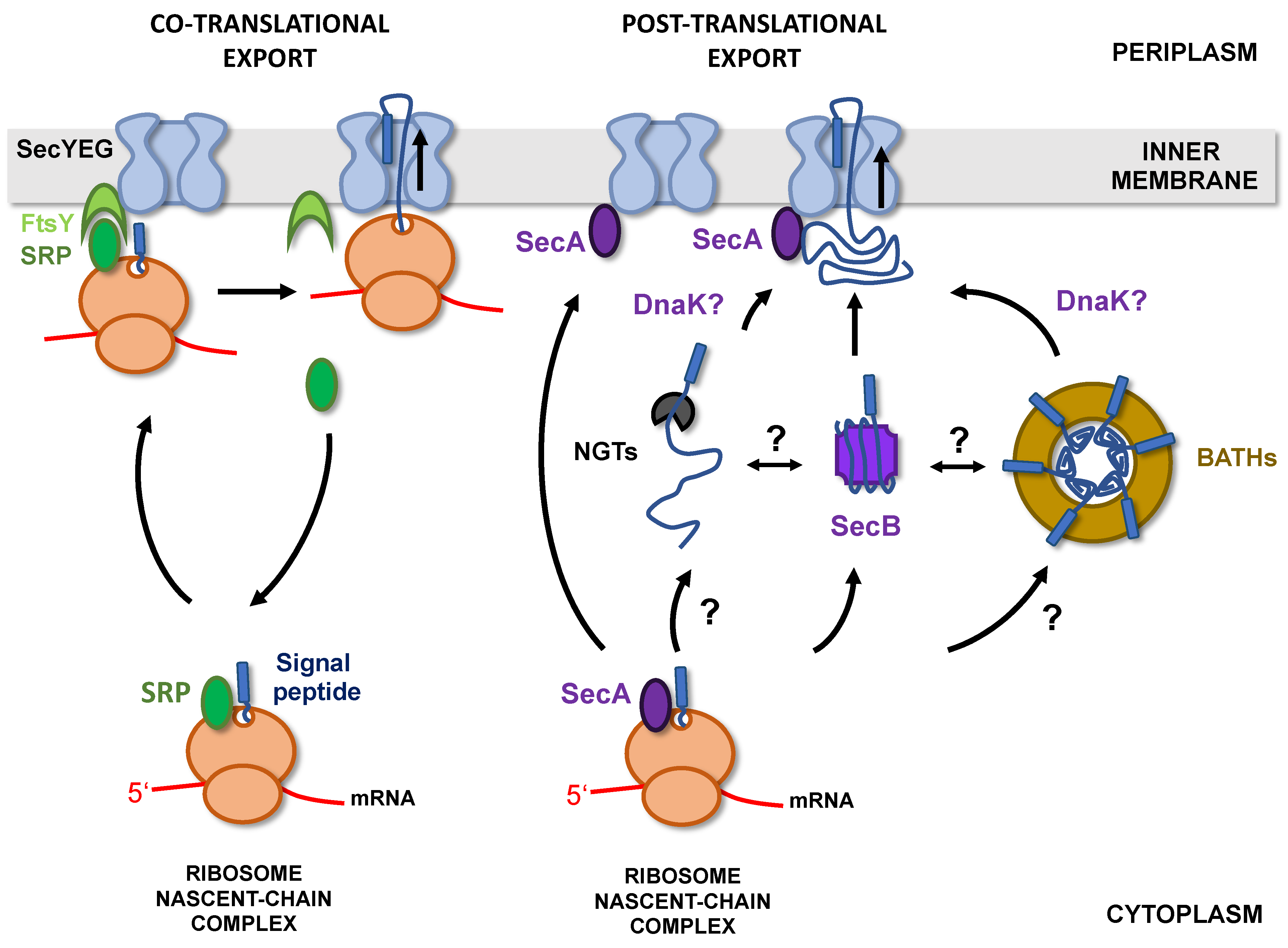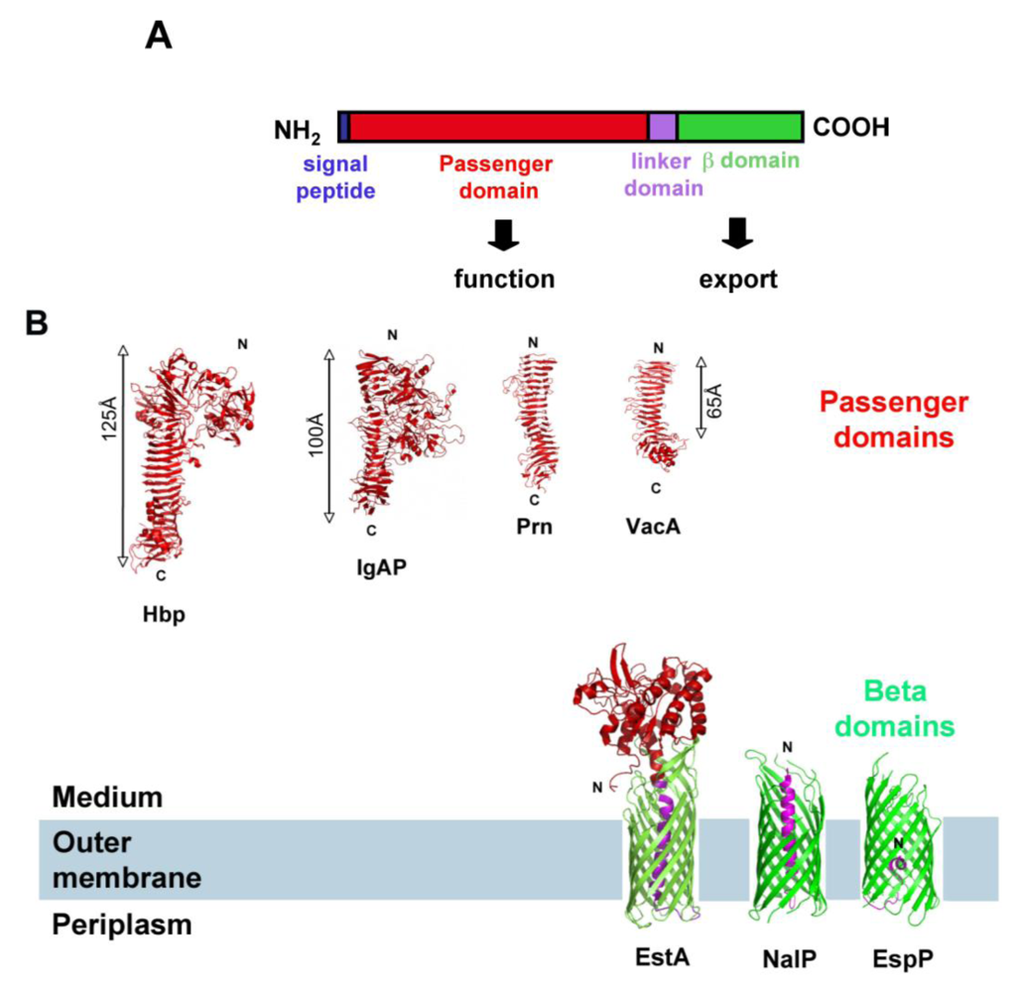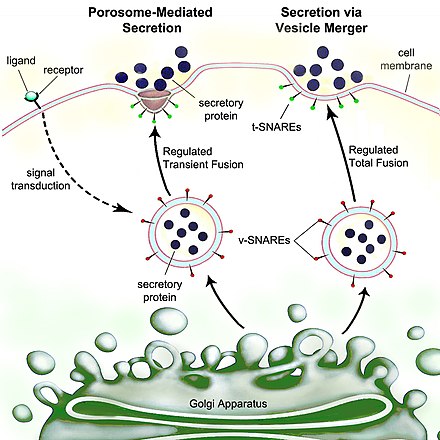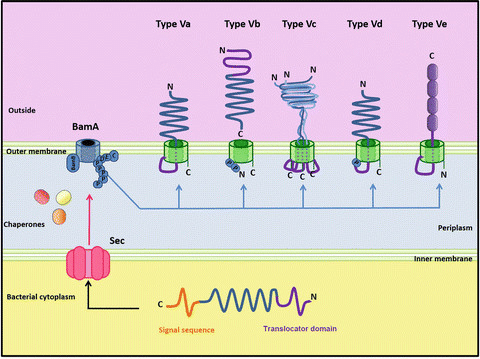Secretion mechanism of the autotransporter proteins. (A) Structure of
5 (667) · € 26.00 · Auf Lager
Download scientific diagram | Secretion mechanism of the autotransporter proteins. (A) Structure of the polyprotein precursor. (B) Transport of the recombinant passenger. By the use of a typical signal peptide, a precursor protein is transported across the inner membrane. After arrival at the periplasm, the C-terminal part of the precursor folds as a porin-like structure, a so-called  -barrel within the outer membrane, and the passenger is transmitted to the cell surface. SP, signal peptide; IM, inner membrane; PP, periplasm; OM, outer membrane. from publication: The Autodisplay Story, from Discovery to Biotechnical and Biomedical Applications | Among the pathways used by gram-negative bacteria for protein secretion, the autotransporter pathway represents a solution of impressive simplicity. Proteins are transported, independent of their nature as recombinant or native passengers, as long as the coding nucleotide | Biomedical Applications, Escherichia Coli Adhesins and Neisseria gonorrhoeae | ResearchGate, the professional network for scientists.

Type V secretion: From biogenesis to biotechnology - ScienceDirect

Computational prediction of secreted proteins in gram-negative bacteria - ScienceDirect

Toxins, Free Full-Text

The autotransporter (AT) secretion pathway. (A) Schematic overview of

Toxins, Free Full-Text

Secretion - Wikipedia

Type V secretion: mechanism(s) of autotransport through the bacterial outer membrane

Molecular basis for the folding of β-helical autotransporter passenger domains

Type V Protein Secretion Pathway: the Autotransporter Story

Schematic overview of Autotransporter (AT) processing, export, and

Polymorphic proteins of Chlamydia spp. – autotransporters beyond the Proteobacteria: Trends in Microbiology

Type V Protein Secretion Pathway: the Autotransporter Story

Alternative mechanisms of autotransporter protein secretion. (A)












